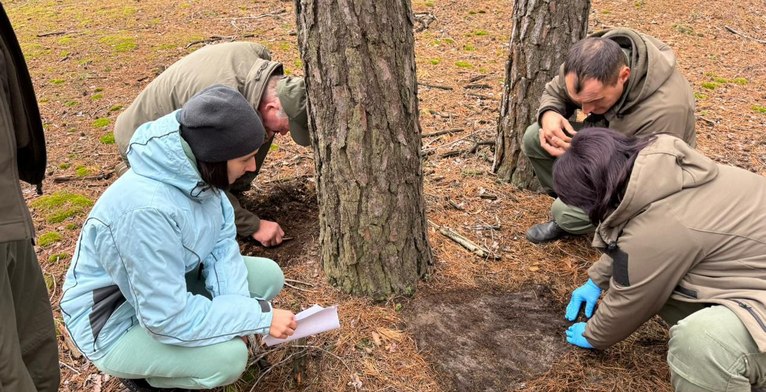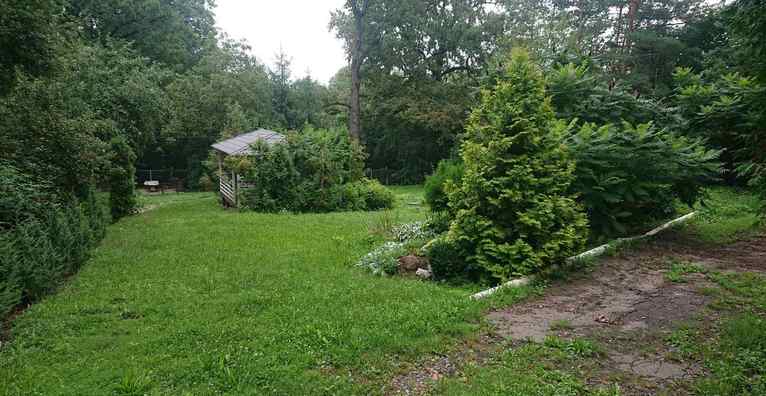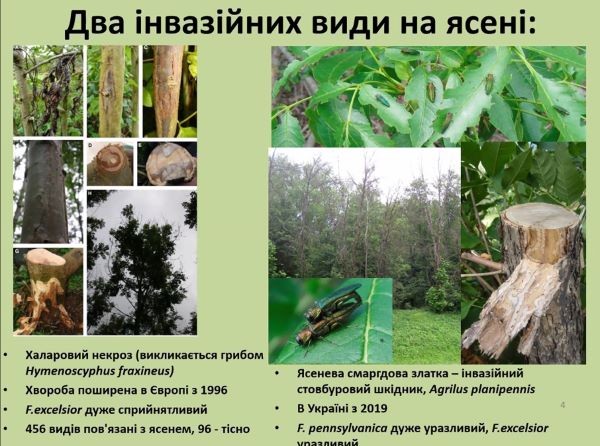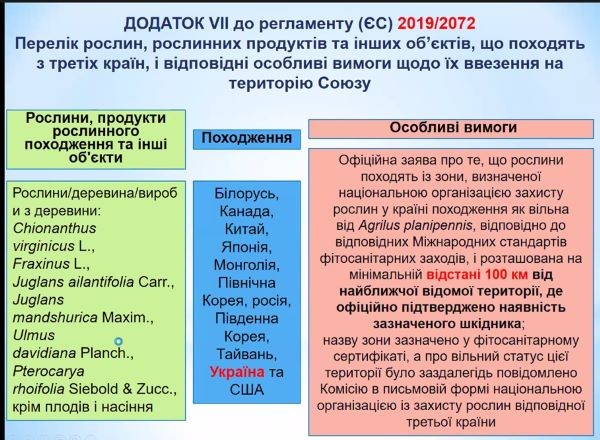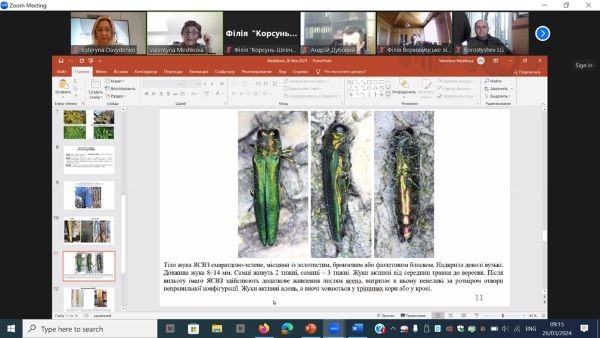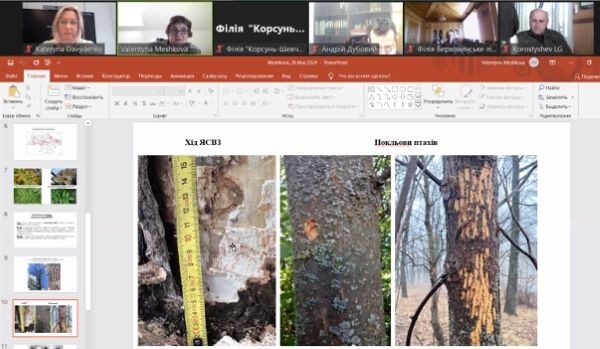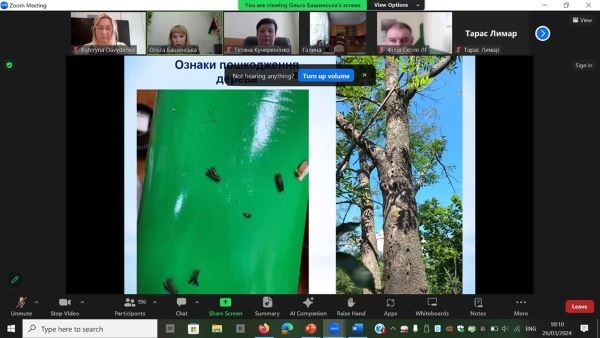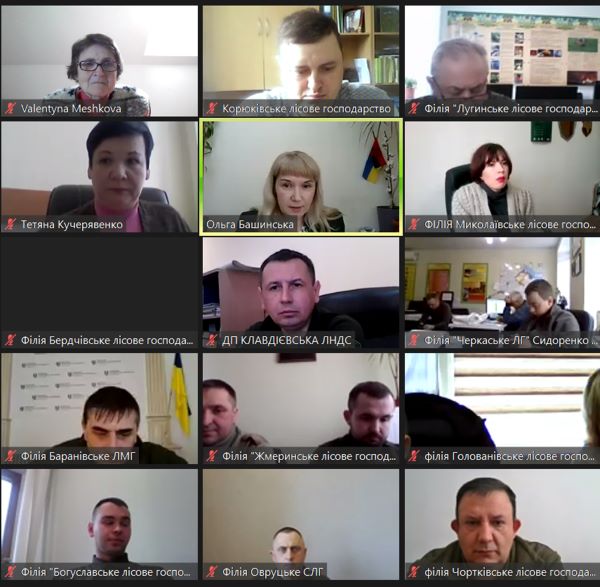On March 26, 2024, an online technical training session was held via Zoom platform regarding the development and further spread of the quarantine pest - the emerald ash borer (EAB) with employees of enterprises, institutions and organizations in the forestry sector.
The training was attended by over 200 heads of structural units of territorial bodies and enterprises (branches of SE "Forests of Ukraine"), institutions and organizations under the State Forest Resources Agency of Ukraine, whose responsibilities include forest protection (Order of the State Forest Resources Agency of Ukraine dated 06.12.2023 No. 600, paragraph 3.2).
The training was opened by Taras Lymar, Head of the Forest Protection Department of the State Forest Resources Agency. The moderator was Tetyana Kucheravenko, Chief Specialist of this Department, who has perhaps the most extensive experience in Ukraine in surveying EAB outbreaks.
Three reports were presented. The main researcher of the Department of Entomology, Phytopathology and Physiology of UkrNDILGA, Doctor of Agricultural Sciences, Professor Valentina Meshkova spoke about the history of EAB spread from Asia to America and the European part of Russia, and from there to Luhansk and Kharkiv regions. The pest was detected in urban plantations of Kyiv in 2022, but judging by the presence of flight holes, it penetrated there 2 years earlier. Photos of the main symptoms and signs of tree infestation by EAB were shown - presence of bird pecking, crown thinning, characteristic D-shaped flight holes and characteristic winding passages under the bark filled with frass. Some biological and phenological features were highlighted. Concerns were expressed regarding the inclusion of the pest in the A1 list, which requires cutting down all infested trees within a radius of at least 100 m from each detected infested tree with subsequent destruction. American scientists with over 30 years of experience have long written about the fallacy of this approach. Research conducted in Europe has found that about 900 species of vertebrates and invertebrates, fungi, lichens and other species are trophically associated with ash. Its disappearance from forests will have irreversible and irreparable consequences. This approach will not stop the spread of EAB in Ukraine, as it infests ash trees not only in the forest fund of the State Forest Resources Agency but also in forests of other departments, forest belts, and green plantations of settlements. Moreover, just as any cholera or COVID does not cause total mortality of the population, the borer is not able to infest certain resistant trees. If the proposed approach is implemented, resistant trees that could potentially provide cuttings or seeds to create new resistant plantations will be destroyed. The implementation of the proposed approach will result in significant losses not only to forest ecosystems but also directly to forestry, as time, labor and costs will be required to remove and destroy the extracted wood without obtaining any products. As we have established, EAB larvae die at relative wood moisture below 30%. The larvae feed on the phloem and penetrate into the wood only for overwintering. Therefore, debarking and creating conditions for rapid drying of the wood may prevent the successful completion of EAB development, and this raw material may be safely used. In any case, foresters must be able to detect areas where EAB has penetrated.




